Universal Side, Top & Base Plate
The universal side panel is used for sides, top, and base of the drainage or storage structure...
Smart EnviroModule (SEM) is an innovative solution in stormwater drainage transport and storage. It is a “4-in-1 product” designed primarily for road works and construction drainage. Unlike traditional systems, the Smart EnviroModule can divert, drain, collect, and store water, and can also be used in sewerage systems in future, currently used for stormwater management. Its Smart Drain feature enables it to function as a modular subterranean storage system, efficiently managing and reusing rainwater for sustainable purposes.

SEM as a road drainage solution
Across the world, various drainage and water storage systems exist — such as massive concrete pipes and rotationally moulded water tanks. However, these conventional systems come with significant drawbacks:

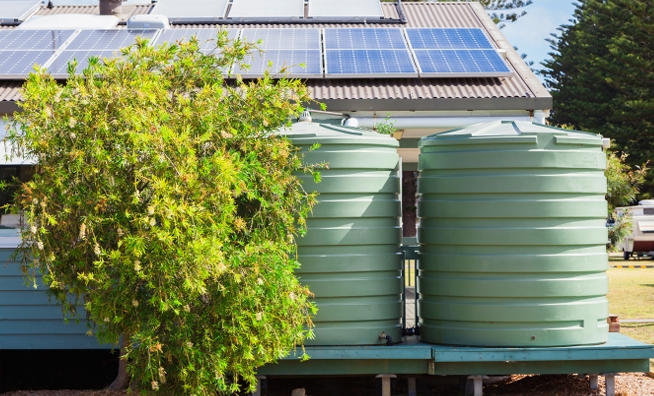
India’s water and wastewater management market is experiencing rapid growth, driven by major infrastructure development and government initiatives. The market, valued at $2.6 billion in 2022, is expected to reach $6.2 billion by 2027. This surge is fueled by the rising demand for wastewater infrastructure and the expanding pipe market across the country. As one of the largest and fastest-growing markets in the APAC region, India presents significant opportunities for advanced water storage and drainage solutions. In addition, the Indian government’s goal to make all urban areas “flood resilient” by 2030 further strengthens the demand for innovative systems like the Smart EnviroModule (SEM).

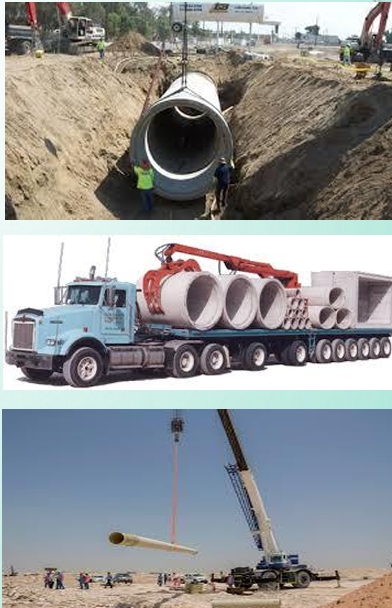
The Smart EnviroModule (SEM) revolutionizes stormwater drainage and storage by offering a modular, lightweight, eco-friendly, and economically efficient alternative to conventional systems. It eliminates heavy manufacturing, simplifies installation, reduces transport difficulties, and allows flexible underground water storage for reuse — making it a smarter, sustainable, and future-ready solution.
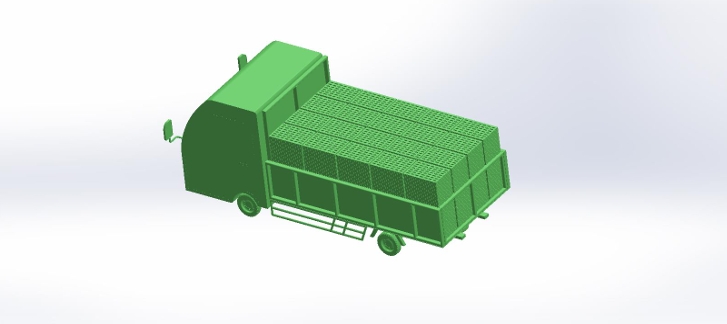
SEM plates can be stacked as a flat pack, and even a mini truck is sufficient for smaller projects, significantly reducing transportation costs. In most cities where roads are narrow and transporting conventional concrete pipes is difficult, SEM offers a smart alternative — it can be easily transported, handled, and installed even in space-constrained urban areas.
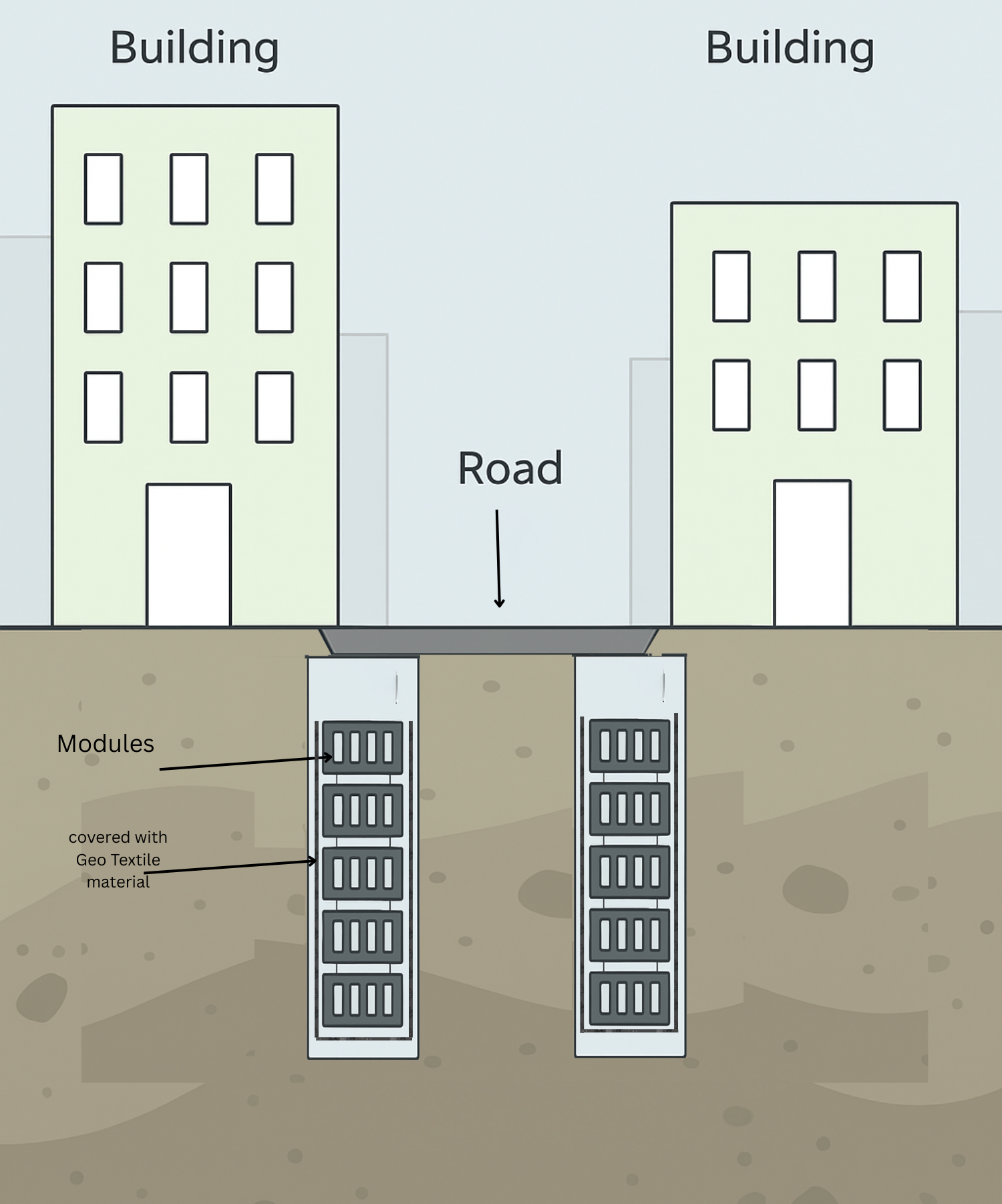
This innovative system represents a strategic method to increase the
cross-sectional area of stormwater conveyance in densely built urban
zones. In cities like Bengaluru, where
roads are narrow and space is limited; conventional concrete
drainage pipes cannot be easily installed due to their large horizontal
footprint.
The Smart EnviroModule (SEM) overcomes this limitation by
utilizing vertical underground space, going deep down beneath the
surface, enabling modules to be stacked at greater depths below the
soil. This design allows for efficient stormwater collection,
filtration, and discharge without requiring additional surface area.
By adopting this depth-based modular system, urban areas can prevent
flooding, water stagnation, and speed loss in stormwater flow, ensuring
a sustainable and space-efficient drainage infrastructure.

In densely built urban areas, space is often too limited for installing large conventional drainage pipes. Traditional systems require significant horizontal space, which makes them unsuitable for narrow construction zones between buildings. The Smart Enviro Module (SEM) offers a revolutionary solution to this challenge. Instead of using bulky drainage pipes, SEM modules provide underground water storage within a compact vertical design. These modules require only a small surface footprint but extend deep underground, efficiently managing stormwater and storing it . By utilizing underground depth instead of surface area, SEM ensures effective water collection, prevents flooding, and supports sustainable water reuse — all while fitting perfectly into tight construction spaces without disturbing the surrounding structures.
The Smart EnviroModule (SEM) demonstrates strong commercial scalability and profitability. Over a five-year projection, both project volume and financial performance show consistent growth, highlighting the system’s long-term potential in the rainwater and wastewater management sector.
| Year | Tanks/Year | Roads/Year | Total Projects | Total Units | Revenue (₹ Cr) | Profit (₹ Cr) |
|---|---|---|---|---|---|---|
| 1 | 10 | 7 | 17 | 425,000 | 93.5 | 55.25 |
| 2 | 15 | 13 | 28 | 700,000 | 154 | 91 |
| 3 | 25 | 20 | 45 | 1,125,000 | 247.5 | 146.25 |
| 4 | 35 | 33 | 68 | 1,700,000 | 374 | 221 |
| 5 | 50 | 41 | 91 | 2,275,000 | 500.5 | 295.75 |
SEM begins its market entry with 17 projects (10 tank systems and 7 road projects), generating ₹93.5 crore in revenue and ₹55.25 crore in profit — establishing a solid foundation for expansion.
With increased adoption, projects rise to 28, and total units reach 700,000, resulting in ₹154 crore in revenue and ₹91 crore in profit — a nearly 65% growth over the first year.
The system gains strong market acceptance, executing 45 projects and producing 1,125,000 units, with revenue climbing to ₹247.5 crore and profit to ₹146.25 crore.
Commercial scaling accelerates further with 68 projects and 1.7 million units delivered. Revenue surges to ₹374 crore, while profit reaches ₹221 crore, reflecting robust operational efficiency.
SEM achieves widespread market presence, completing 91 projects and delivering 2.27 million units. The revenue peaks at ₹500.5 crore with a profit of ₹295.75 crore, confirming its strong financial sustainability and growing demand.
This project also extends collaboration opportunities at the ministry level. We welcome partnerships with government departments, public sector bodies, and private organizations to implement SEM in large-scale projects across urban and rural regions. By working together, ministries and stakeholders can accelerate sustainable water management, strengthen infrastructure resilience, and contribute to building a flood-free and water-secure nation.
This is not the limit of what can be achieved — it represents only the minimum five-year projection. With effective marketing and strategic partnerships, the potential growth could be significantly higher.
The Smart EnviroModule (SEM) offers excellent return on investment for all stakeholders — providing a patented, high-demand product that serves as both an efficient drainage and sewerage system (future vision) for manufacturers, and as a versatile, cost-effective water storage and management solution for consumers.
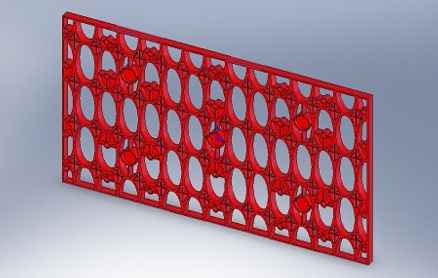
The universal side panel is used for sides, top, and base of the drainage or storage structure...
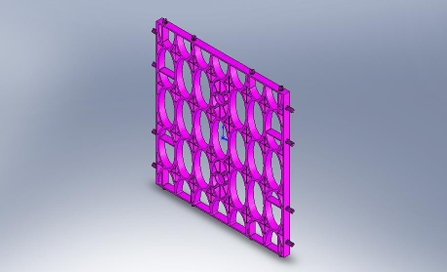
The universal internal and end cap plate is used to close off the ends of the structure...

The load bearing plate provides extra strength to the structure...
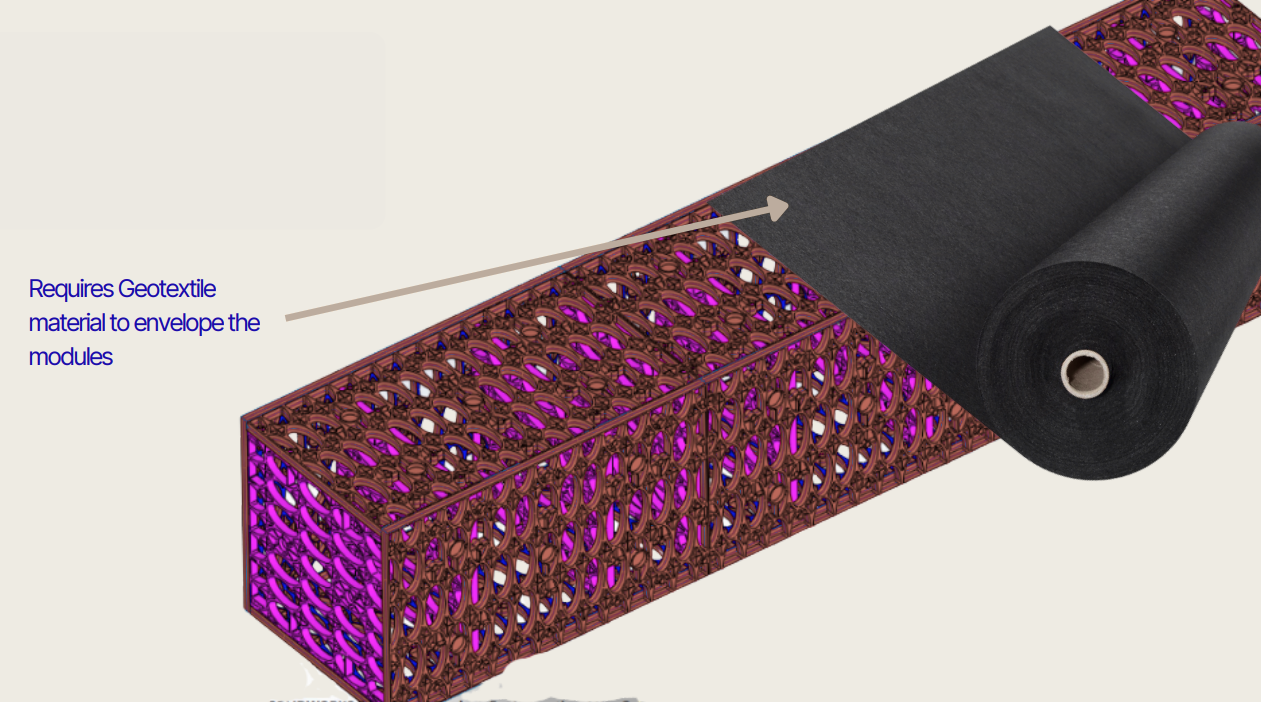
Drainage Compartment Assembly. Fully closed
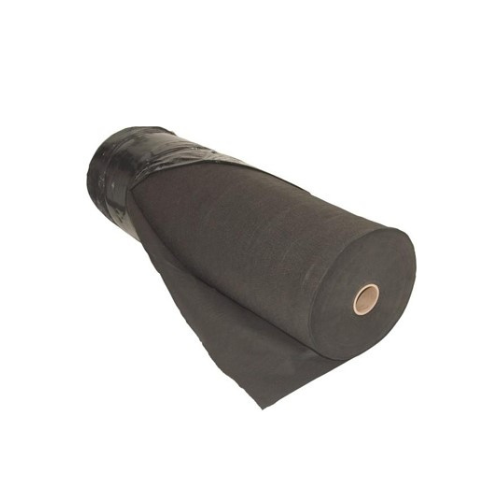
SEM installation also requires the use of porous geotextile material for filtration applications and non-porous geotextile material for water harvesting and storage applications.
This diagram illustrates a residential rainwater harvesting system designed to collect, store, and manage rainwater efficiently. Rainwater from the roof is directed through the downpipe into the EnviroSump, where initial filtration occurs. The filtered water then flows into the EnviroModule2 rainwater tank for storage. From there, it can either be pumped for household use or directed to an infiltration or detention tank for groundwater recharge. The system is protected by a waterproof liner and geotextile fabric, with sand backfill ensuring structural stability. Additional features such as the pump suction well and overflow outlet help regulate water levels and prevent flooding, promoting sustainable water use within the home
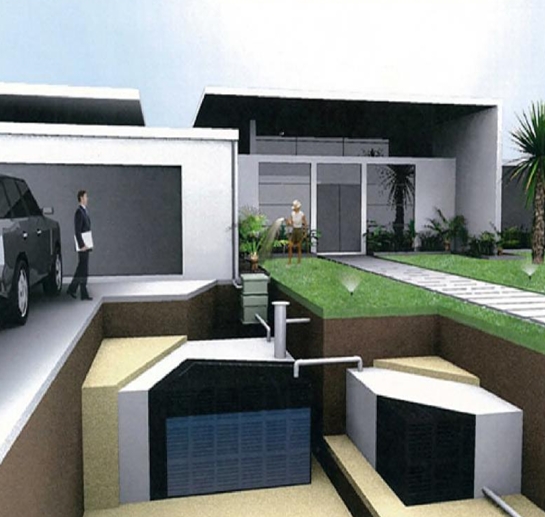
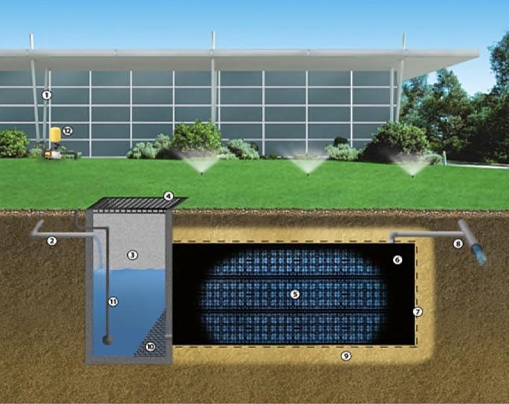
Downpipe 1 .Inlet pipe 2 .Discharge control pit 3 .Lockable lid/grate 4 .EnviroModules 5 .Welded tank liner 6 .Protection fabric 7 .Overflow pipe 8 .Coarse sand backfill 9 .Maximesh screen 10 .Suction line 11 .Above ground pump
This diagram illustrates a residential rainwater harvesting system designed to collect, store, and manage rainwater efficiently. Rainwater from the roof is directed through the downpipe into the EnviroSump, where initial filtration occurs. The filtered water then flows into the EnviroModule2 rainwater tank for storage. From there, it can either be pumped for household use or directed to an infiltration or detention tank for groundwater recharge. The system is protected by a waterproof liner and geotextile fabric, with sand backfill ensuring structural stability. Additional features such as the pump suction well and overflow outlet help regulate water levels and prevent flooding, promoting sustainable water use within the home
At Smart EnviroModule, we design and implement advanced Storm Water Management Solutions that transform rainwater from an overlooked runoff into a valuable resource. Our systems are engineered to capture, filter, store, and reuse stormwater, ensuring a cleaner environment, reduced flooding, and long-term sustainability.
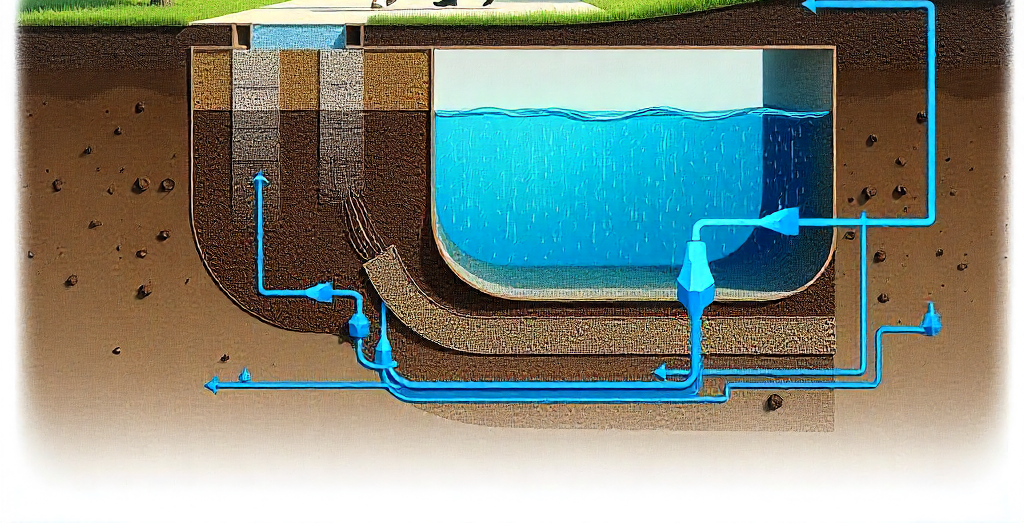

This illustration shows how the Smart EnviroModule (SEM) efficiently captures rainwater from roads, walkways, and surrounding areas. The collected water passes through a filtration and storage module below ground, where it is filtered, stored, and redirected to support groundwater recharge, irrigation, or reuse — all while preventing surface flooding and maintaining a green, sustainable urban environment.
As part of our future vision, Smart EnviroModule aims to
revolutionize wastewater treatment by transforming sewage into a
clean source of renewable energy. This next-generation concept
integrates underground Smart Enviro-Modules with
anaerobic digestion technology to convert organic sewage waste
into methane gas — a valuable green energy
resource.
The captured methane can be directed to a
combined power and heat converter, generating
both electricity and usable heat for residential
or community use. Excess power can even be supplied back to the
grid, contributing to energy self-sufficiency.
To ensure safe and efficient operation, the proposed system
includes an automatic timer,
mechanical diaphragm switch,
exhaust fan with trigger assembly, and a
visual & audio alert system featuring a siren and
flashing indicator light. Manholes provide secured access for
maintenance with padlock safety.
This futuristic innovation envisions a world where sewage is no
longer a waste problem but a
valuable energy opportunity — reducing
environmental pollution, minimizing carbon emissions, and creating
a sustainable circular ecosystem for future cities.
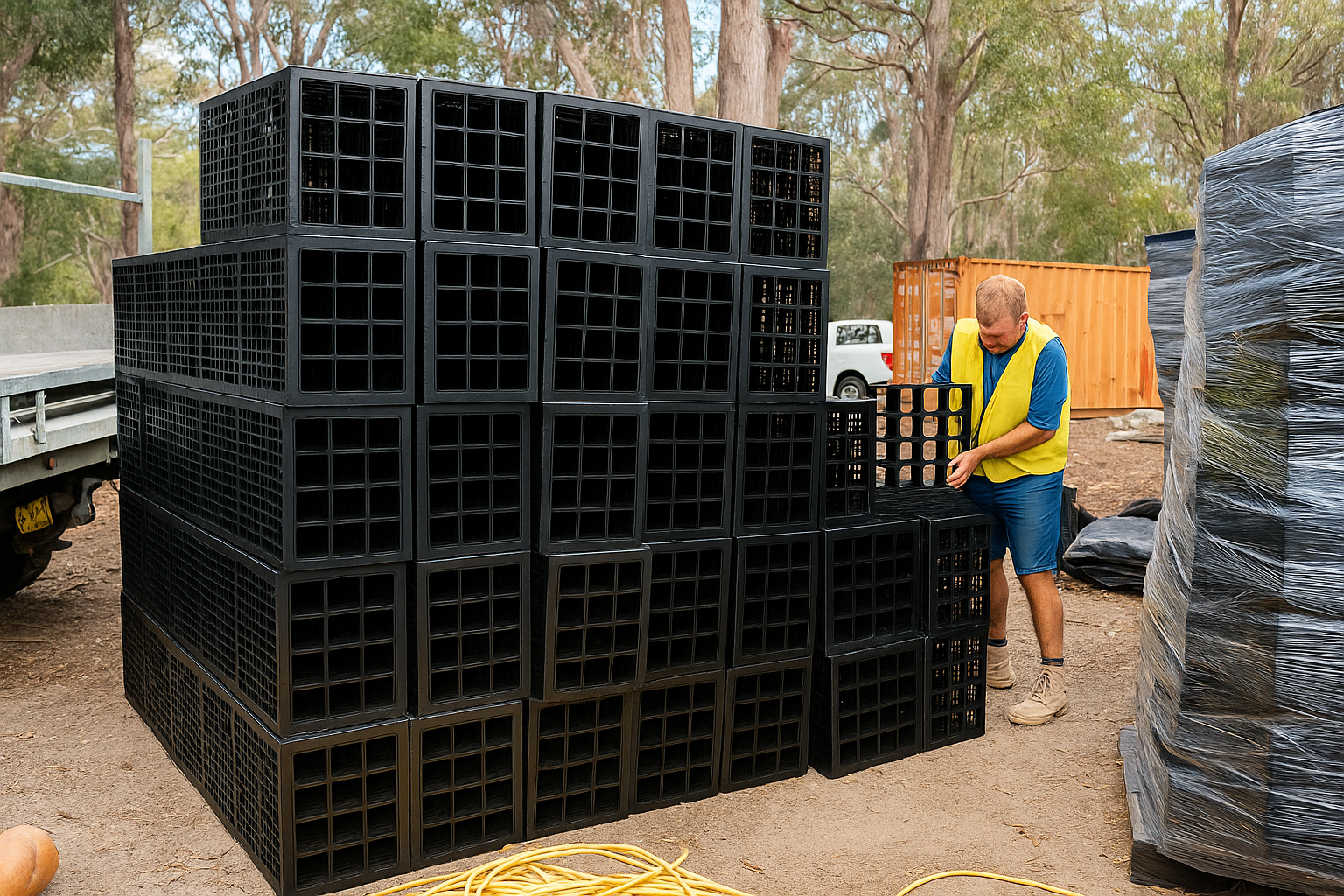
Enviro Modules are assembled
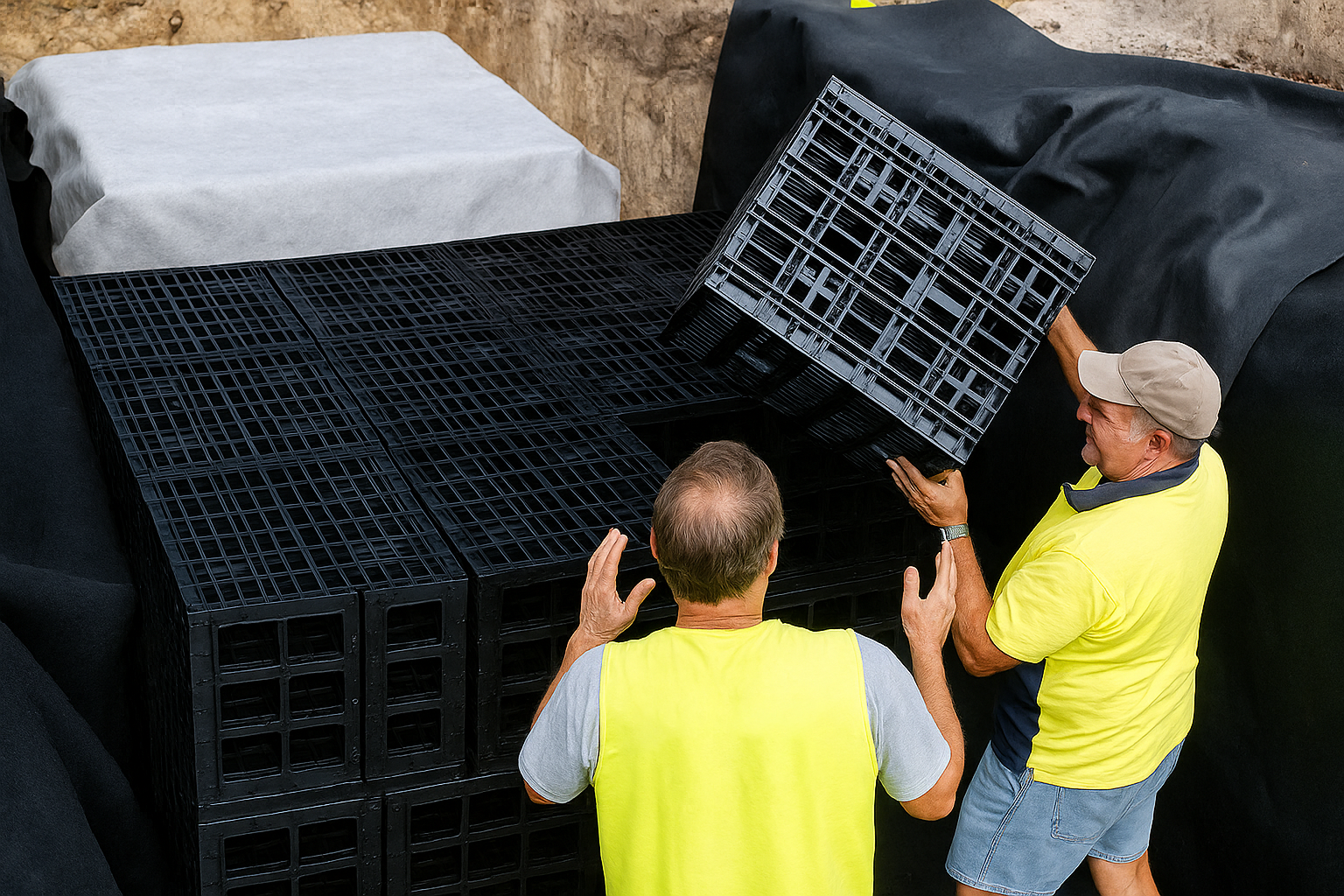
Modules are placed inside fabric.

Tank is ready for backfill to buried Underground.
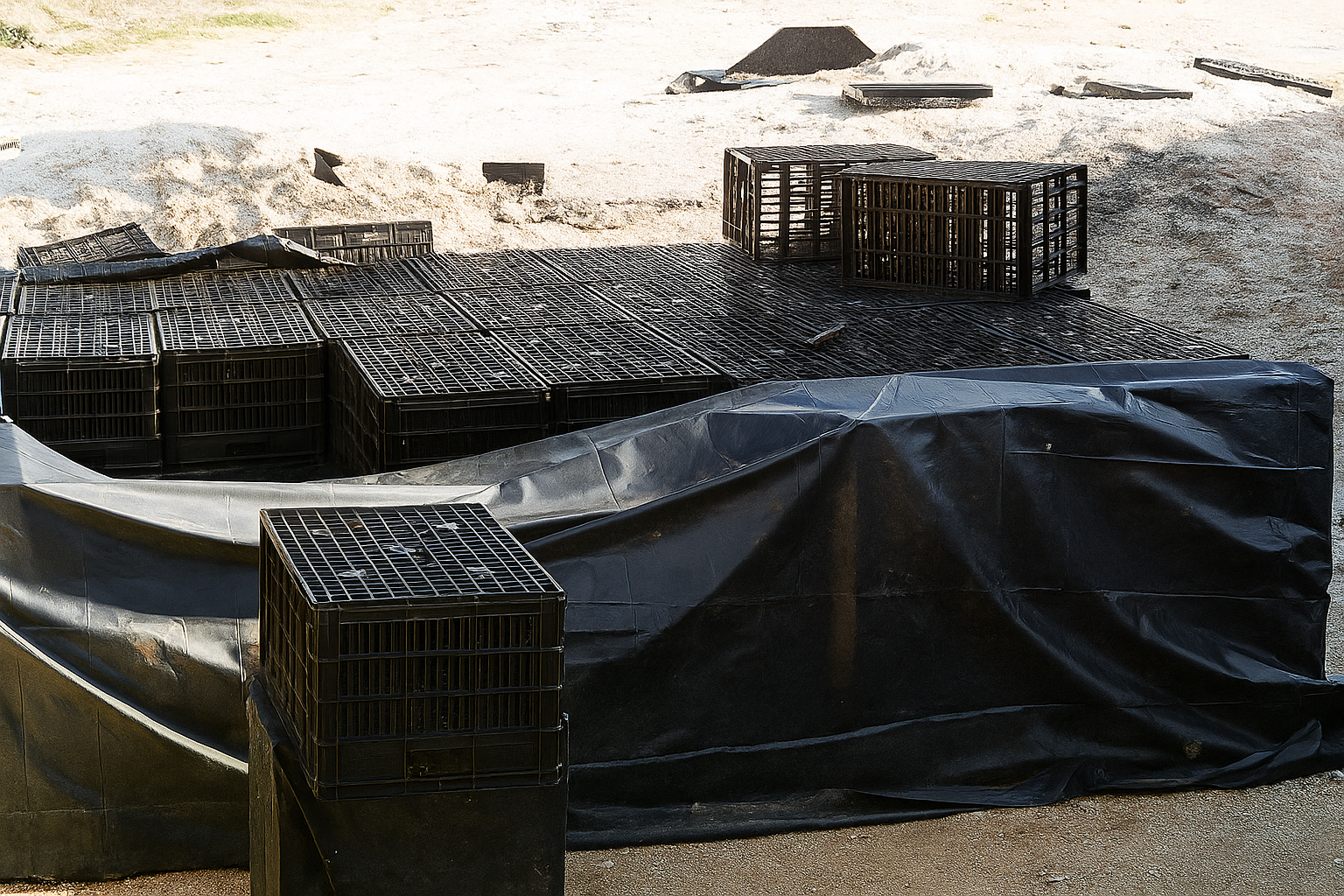
The SEM modular units are assembled and arranged at the installation site before being covered with Geo-Textile fabric and buried beneath the soil layer for proper stormwater filtration and storage.
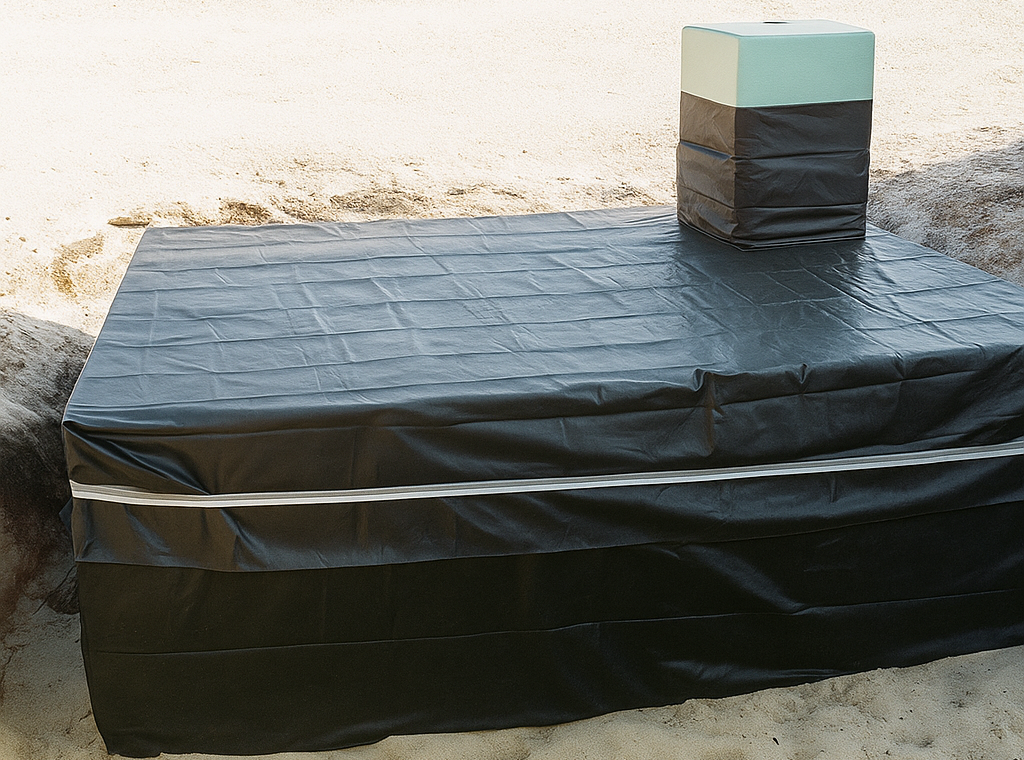
The Smart EnviroModule (SEM) units are securely covered with Geo-Textile material and installed below ground level. The system is embedded under compacted soil to ensure long-term stability and filtration efficiency.
The Smart EnviroModule (SEM) represents more than just a
breakthrough in rainwater and wastewater management — it is a commitment
to building a cleaner and more sustainable future for India. By
transforming the way the nation captures, stores, and reuses water, SEM
addresses two of our greatest challenges:
flood prevention and water scarcity.
Our subterranean modular system is
patented , scalable, and cost-effective, making it adaptable for
urban, industrial, rural, and village applications alike.
Designed to be installed below ground, SEM optimizes limited surface
space — a crucial advantage for densely populated cities like Bengaluru,
where compact drainage networks often overflow during monsoon seasons.
Through innovation Smart EnviroModule (SEM) is leading the way
toward a cleaner, greener, and more water-secure India, where
technology and nature work together to protect our planet’s most vital
resource — water.
This innovation not only helps prevent
urban flooding and drainage overflow, but also mitigates health
hazards caused by wastewater stagnation, which can lead to the
spread of waterborne diseases and Pandemic. By enabling cleaner drainage and
sustainable water reuse, SEM supports healthier communities and
contributes to long-term environmental resilience
From residential complexes and villages to industrial zones and smart
cities, SEM ensures that every drop of rainwater is captured, treated,
and reused — helping restore balance between people, nature, and
infrastructure.
Smart EnviroModule — Redefining Water. Restoring the Future.